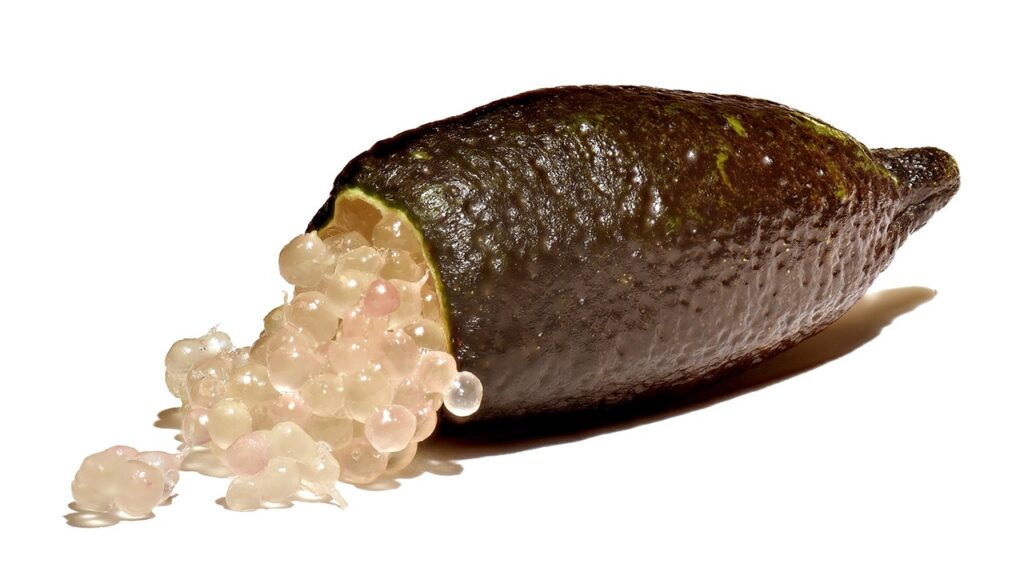
Citrus australasica, the Australian finger lime, is a thorny understorey shrub or small tree of the lowland subtropical subtropical rainforests of Queensland and New South Wales, Australia.
by John Bagnasco
It has edible fruits which are now under development as a commercial crop in the US. Who could have predicted that finger-shaped fruits nestled among small, pointed, thin leaves on thorny branches would appeal to citrus lovers? This odd citrus hits the top of the “super cool” and zing taste-meter. Often referred to as citrus caviar, chefs prize the 3-7 in. tapered fruits because its juice vesicles burst out when they are sliced width-wise and resemble caviar or tapioca balls.
The translucent orbs range from pale green to dark berry and its unique tangy, refreshing lime-tasting fruits are used as garnish, spooned over oysters on the half shell, in salads, soups, jams, sauces, Thai curries or eating them plain for a zesty, crunchy munch.
Finger limes can be grown in the ground in USDA zone 10. Where winters are cold, plant in a container and bring indoors where there is bright, indirect light during the frosty seasons. You’ll know finger limes are ready to harvest when they pull off the branches easily. Ripe fruit won’t fall off the tree, you need to pull them off. If you pull fruit and it resists, try again a week later. Ripe finger limes can be from 1-5 inches long. Even small fruits can be ripe so don’t worry about the size
Research conducted since the 1970s indicated that a wild selection of C. australasica was highly resistant to Phytophthora citrophthora root disease, which has resulted in a cross-breeding program with finger lime to develop disease-resistant citrus rootstock. In 2020, researchers began working with C. australasica to develop solutions for Citrus greening disease.
If your local nursery does not have finger limes, they can be ordered online from Four Winds Growers.
